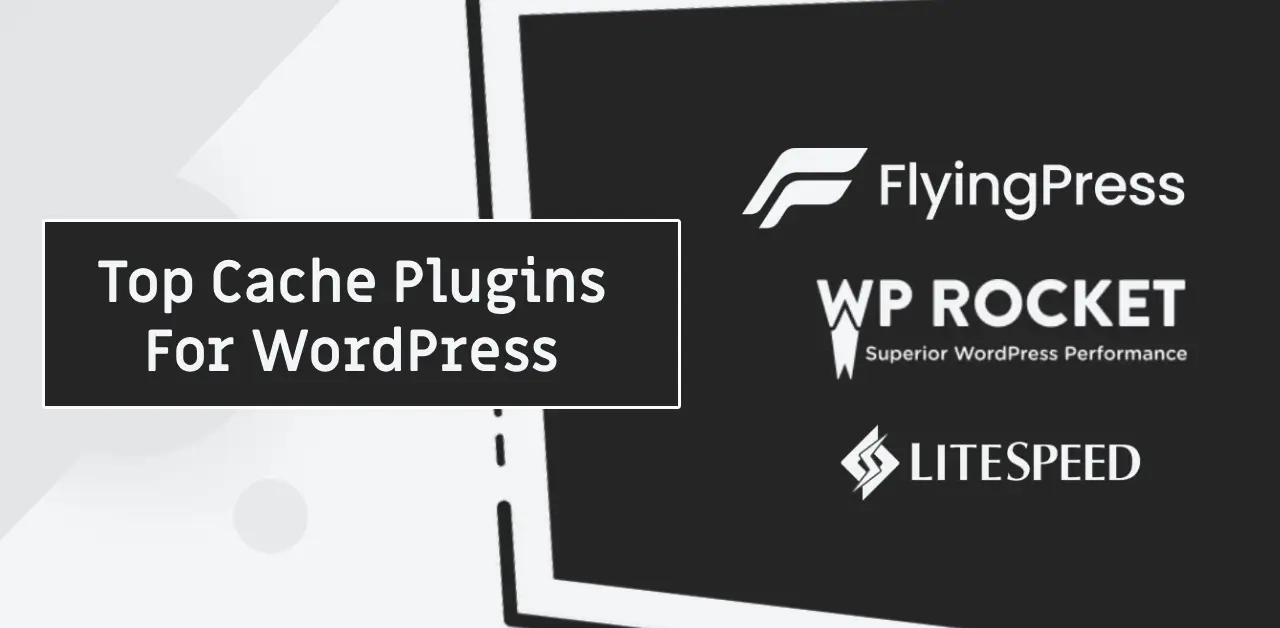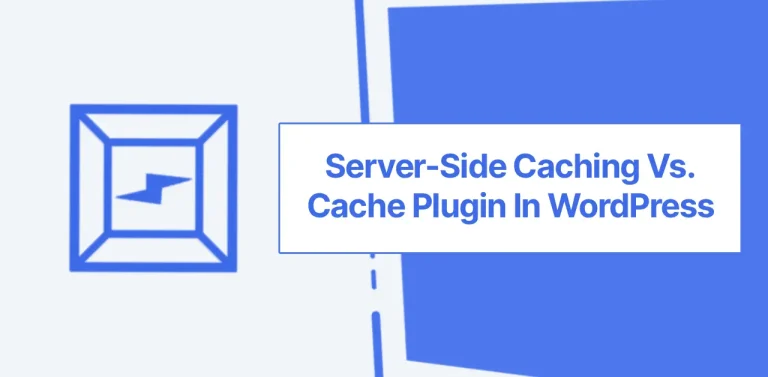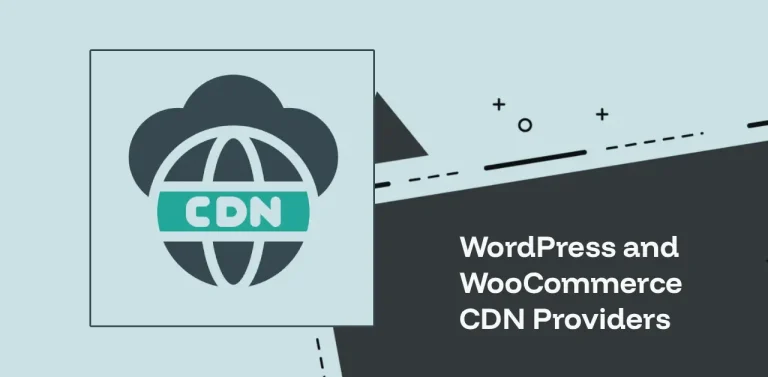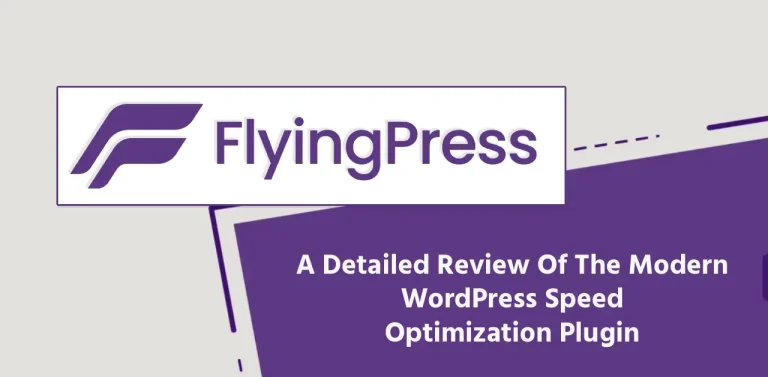Before I wrote this, I tested many WordPress caching plugins with different settings and servers to find the best results. You’ll get various results depending on the server and how your website is built.
Plugins, themes, hosting, and CDN can impact your website’s performance and several other aspects. You can combine cache plugins with asset optimization plugins, such as Perfmatters. And avoid stacking several caching plugins at once, since this risky combo can crash your site or create confusing duplicate features.
Many hosting providers offer server-side caching, and some control panels support FastCGI. However, you may still need a separate cache plugin depending on your configuration. This is because cache plugins provide more site-wide improvements than server-side optimization. Many plugins also offer EXTRA features for your use.
I use LiteSpeed Cache and FlyingPress in my setup. LSC is free and offers numerous features, while FlyingPress is a paid plugin that provides a clean, user-friendly interface and gives you exactly what you need (you can use other caching plugins).
LiteSpeed Cache, WP Rocket, and FlyingPress are the top WordPress cache plugins currently available; here is a brief comparison of their key differences.
| Feature | FlyingPress | LiteSpeed Cache | WP Rocket |
|---|---|---|---|
| Prices | $59/Y | Free | $58/Y |
| Server-Side Cache | × | ✓ | × |
| Object Cache | × | ✓ | × |
| CDN | FlyingCDN | QUIC.cloud | RocketCDN |
| Regenerates cache | ✓ | × | × |
| Preloading critical Pics | ✓ | × | × |
| iFrame Optimization | ✓ | × | × |
| Regular updates | ✓ | ✓ | × |
| Cache control | × | Extensive | × |
| Debloating | ✓ | × | × |
| Element lazy render | ✓ | × | × |
| Resource localization | ✓ | ✓ | × |
| Separate Cache | ✓ | × | ✓ |
| Varnish Add-on | × | ✓ | ✓ |
1. LiteSpeed Cache

My #1 pick is LiteSpeed Cache because it’s free, #2: it’s a solid solution, and #3: it offers more features than any other cache plugin. Additionally, the LiteSpeed server offers DDoS and brute-force protection.
LiteSpeed Cache can help you optimize certain sections of a large site. However, this cache plugin can be complicated for new users.
Currently, LiteSpeed utilizes many hosting companies; however, it is recommended to use a reputable LiteSpeed hosting service to achieve better results with LSC.

Unlike other caching plugins, LSC has tons of asset optimizations, and you’ll have to be careful with these because most of them can mess up your site. I’ve noticed that LSC updates are frequent and address bugs and problems promptly.
Reasons to Use LiteSpeed Cache:
- Almost all caching plugins work at the PHP level. However, LSC is a server-side cache plugin that doesn’t support cache preloading.
- It features numerous cache controls, including commenters, REST APIs, PHP resources, private cached URIs, and many more.
- It supports Redis and Memcached, along with additional settings such as persistent connections and web admin caching.
- External resources for localization, like Gravatar and analytics.
- Effectively utilizes image and media optimization features, including image preload, WebP, quality control, placeholders, lazy loading, and more.
QUIC.cloud is a CDN for LiteSpeed users. It’s the first CDN service that caches HTML at the CDN level. However, I don’t think QuiC.cloud is ideal, and I prefer Cloudflare’s APO over QUIC.cloud.
Other Considerations
LSC requires the LiteSpeed or OpenLiteSpeed server to enable caching and other features. It works with QUIC.cloud, but not so well.

The advanced user interface is LiteSpeed Cache’s main drawback. Its many features can be challenging to manage and require additional time and effort.
It’s similar to W3TC because it has complicated settings that can make it easy for users to break their websites without understanding what they’re doing.
Another downside is that it lacks cache rebuilding, which is not a significant issue for large websites but may be a concern for low-traffic or frequently changing content.
LiteSpeed Cache is one of WordPress’s most popular caching plugins, with over 7 million users. It has pros and cons, as well as alternatives, but it is only compatible with LITESPEED or QUIC.CLOUD. Still, LiteSpeed Cache is an effective plugin for dynamic, high-traffic websites and improves Core Web Vitals.
2. FlyingPress

A top-notch cache plugin from Gijo Varghese – FlyingPress is the most reliable cache plugin I’ve found, with advanced features without being complicated. Even works with managed hosts like WP Engine, Rocket.net, and Flywheel, among others.
I’ve used several caching plugins, and most aren’t effective at removing unused CSS. But FlyingPress lets you pick how to load unused CSS after generating critical CSS.
The plugin does more than just address Core Web Vitals; it delivers blazing speed for real users (read my FlyingPress review for more). Ease of use is a notable advantage of FlyingPres; you can use it even if you are new to WordPress.
With the V.5 update, the UI was completely overhauled, and some tweaks were made, including the Core Web Vitals tracking and Cloudflare for full-page caching.
Regardless of the server environment you choose, whether it’s Nginx, Apache, or LiteSpeed, FlyingPress works seamlessly on any server that supports it.
FlyingPress Features:
It includes custom iframe settings, such as lazy loading and replacing YouTube videos with thumbnail images. Image Optimization isn’t built into most cache plugins; you have to use separate plugins or CDNs.
However, FlyingPress offers useful image features, such as excluding above-fold images, preloading critical images, responsive images with FlyingCDN, and Auto width and height, among others. FlyingCDN is powered by Cloudflare Enterprise. And you can get rapid CDN with security features and a global TTFB under 100ms.
Every site needs fonts, but most people don’t optimize them. However, FP has combined and self-hosted Google fonts and displays fallback fonts.
Delaying JavaScript can slow down some websites, especially those with third-party ad networks. FP optimizes JS by executing after user interaction. The lazy render elements function defers rendering until elements are required.
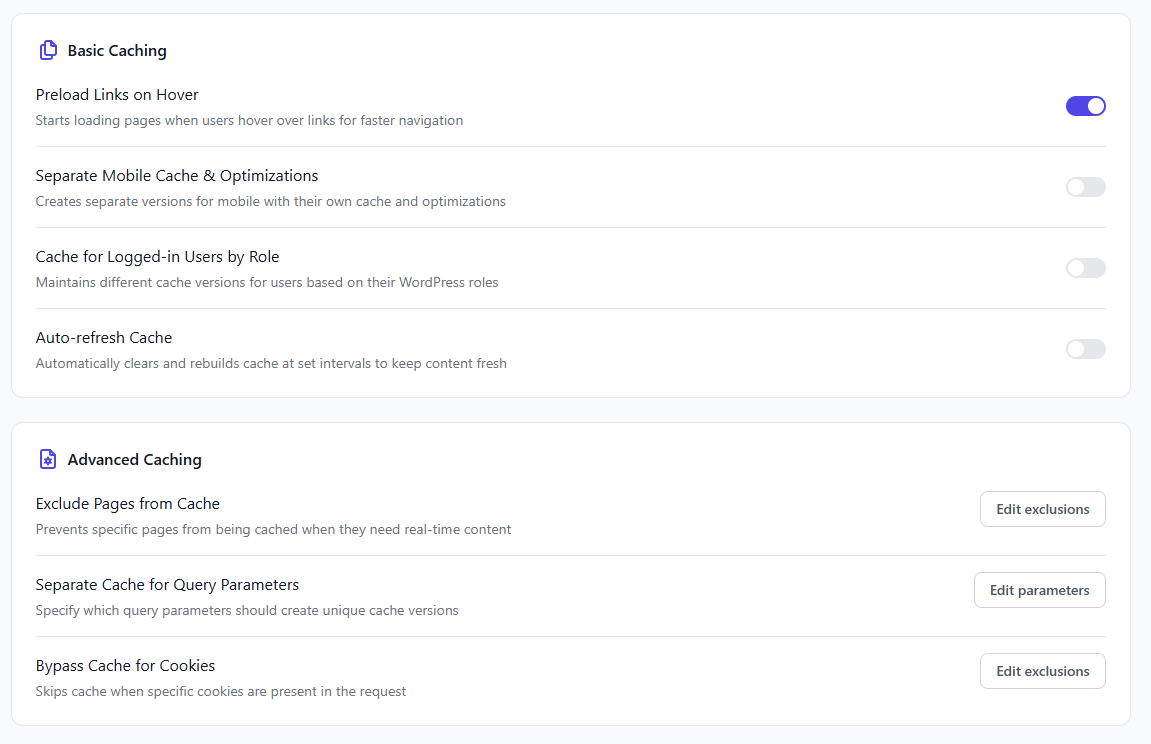
Cons?
It’s hard to find cons of FlyingPress, but it would be helpful if it added add-ons such as object cache (Redis, Memcached) and Varnish. It would be good to have advanced bloat-removal features, such as filtering.
Database optimization could be improved, but most features are good enough. FlyingPress makes it easy for anyone to optimize their WordPress sites.
I don’t think you need speed optimization services for most of the points. Yes, it can’t optimize everything, but it’s usually very effective. The simple, user-friendly interface lets you tick the items; it will do the rest automatically.
3. WP Rocket

Over the years, WP Rocket has been one of WordPress’s most popular paid cache plugins. I have used Rocket for a long time, but LiteSpeed Cache and FlyingPress have resolved my performance issues more quickly than WP Rocket. It has sufficient features and reliable support. But there are more cons than pros with WP Rocket.
My biggest complaint about this plugin is that it’s outdated and hasn’t been updated in a while; according to the changelog, they only fix bugs.
Compared to FlyingPress, LSC, or even PerfMatters, WP Rocket does not offer good performance concerning “unused CSS.” It can seriously damage your website. Rocket doesn’t support local fonts, so it’s not well-suited to font optimization.
I don’t recommend WP Rocket for optimizing iFrames and third-party resources. But I prefer WP Rocket’s add-ons, especially VARNISH and Cloudflare. Additionally, Rocket CDN settings allow you to use any WordPress CDN service you choose.

Although WP Rocket is still an ideal caching plugin and the tutorial is helpful, it’s no longer the top choice. Yes, it remains in the game and has a large user base.
But I think it’s now a deprecated plugin, and those who love WP Rocket should look at FlyingPress instead. Also, WPR raised prices across all packages.
4. Cloudflare APO

Want to cache full pages at CDN EDGE? You can use Cloudflare Automatic Platform Optimization. This Cloudflare plugin isn’t a conventional cache plugin.
It’s not practical without APO, and you still need a regular cache plugin. However, it enables Cloudflare to serve your whole WordPress site from its edge locations.
Why should you consider Cloudflare APO?
Most CDNs don’t cache HTML in their networks. That is one of the primary reasons the website’s Time to First Byte is slower, even with a CDN. APO, however, allows Cloudflare to serve your entire HTML webpages rather than just static pages. Approach is also known as full-page caching (complete caching at the CDN level).

TTFB significantly impacts Core Web Vitals and other page speed metrics. Due to the long TTFB, users often have to wait for the server to respond. So, Cloudflare Automatic Platform Optimization can reduce your website’s time to the first byte.
TTFB is the time it takes for users to receive the first byte of data from the server after a request. If a website is fast, then it has the fastest TTFB.
You should optimize your site’s Time to First Byte before using other optimization tactics. See this screenshot, showing TTFB with and without Cloudflare APO. TTFB test on Speedvitals.com (you can also use the KeyCDN performance test).


APO is an easy way to speed up your site with Cloudflare. It is cheaper, offers decent performance, and includes additional features (compatibility with WordPress doc plugins). It is compatible only with WordPress and costs $5/month with Cloudflare.
APO is free with PRO and other PAID plans. You can still use APO with any type of cache plugin. However, you don’t need APO when using FlyingCDN, Cloudways CDN, or Rocket.net. They already use Cloudflare Enterprise with full-page caching.
5. Breeze

Breeze is a free caching plugin from Cloudways and works well with Cloudways and other NGINX and Varnish setups. But the optimization features aren’t impressive, and I’d like to see better progress in Breeze. I’ve noticed some improvements with the Cloudways cache plugin over the past months, but it still lacks several key features.
It lacks the same stability as other high-quality plugins, such as LSC and FlyingPress. But you can control the Varnish cache in Breeze; if you change the content, you can purge the cache. Also, Varnish is a server-side caching solution for WordPress.
It is a free WordPress plugin, and its caching features are handy if you host your site on Cloudways. In practice, its file-optimization approach isn’t ideal, especially for CSS, which can cause issues. And there are no optimizations for images or fonts.
Some Breeze Plugin Features:
- Cache Engine: Combined with Varnish, it’s suitable for caching.
- Cross-Origin Safe Links: This isn’t an optimization feature, but it may be helpful to add a “noopener noreferrer” attribute to outbound links to enhance security and improve access to the website.
- Move the JavaScript files to the footer: This isn’t useful and can cause your site to crash. But if you have JS files in the header and body sections, you can add them to the footer. (Not recommended)
- Inline JS delay: You can reduce the slowdown your website experiences from third-party scripts, such as ads and analytics.
- DNS prefetch: I don’t think it’ll improve site performance. But it helps identify external domains and reduce the impact of external scripts.
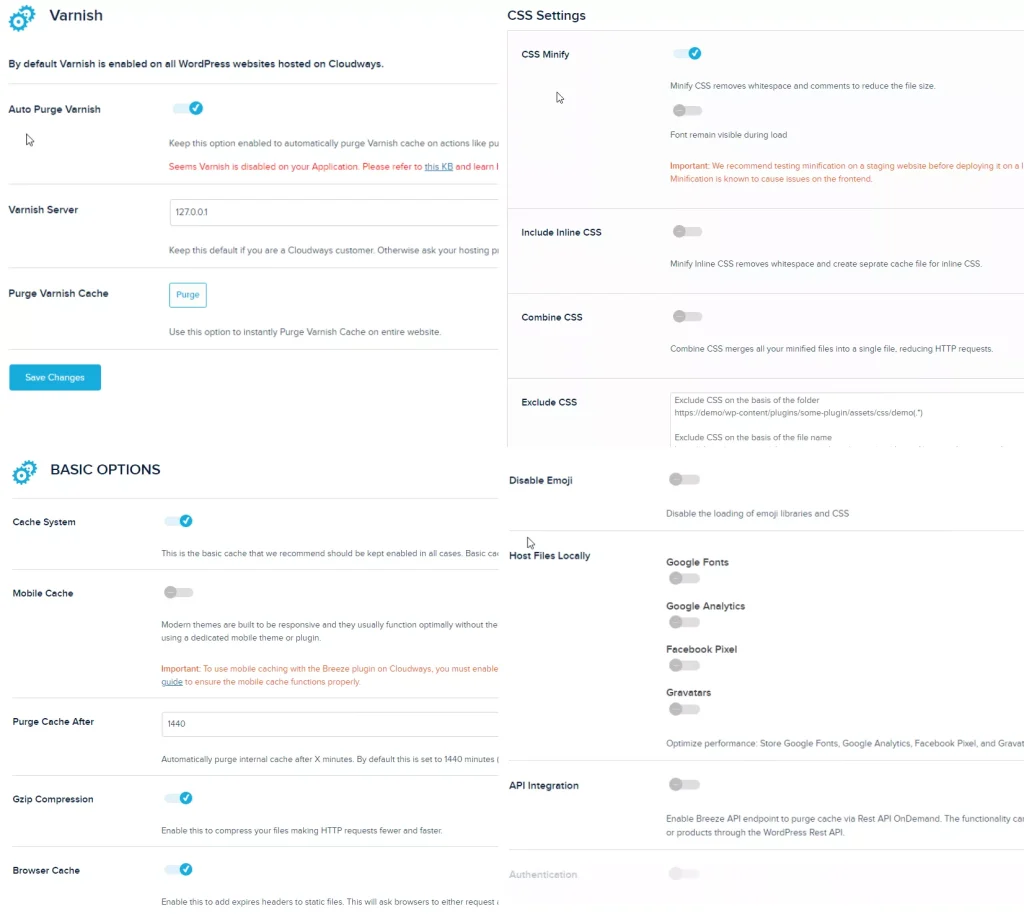
Use Breeze to cache your website; it also offers several other features. And you’ll need some knowledge of configuring the Breeze WordPress cache plugin. It lacks many core features, such as images, fonts, and CSS optimization, so you’ll need extra plugins to address these needs. At least, it is useful when used with Perfmatters.
6. Powered Cache

Powered Cache is an impressive caching plugin offering numerous features in both its free and premium versions. It isn’t as famous, but I think it’s worth it.
Most WordPress cache plugins require the Pro version for cache preload. However, preload is included with Powered Cache at no additional cost and features such as DNS prefetching and pre-connecting external resources.
Despite its limitations, the free version has enough features to optimize static sites. Besides, it has a few flaws; I’m not impressed with the caching, but the rest works.
I’ve tested the premium version and recommend it. Some of the features this cache plugin has are:
- You can set custom settings, query strings, or exclude pages from caching.
- Even the free version offers some handy features, such as optimizing HTML via a DOM parser, combining Google fonts, and delaying/deferring JavaScript. Lazy load, WordPress embeds, lazy load for widgets, and remove emoji scripts.
- The Extension allows you to purge the Cloudflare cache directly from the WordPress dashboard.
- Powered Cache supports both Redis and Memcached. You don’t have to install an additional plugin to handle Object Cache.

With the premium version, you receive features such as image optimization, critical CSS, unused CSS removal, Varnish add-on, Google-Facebook tracking, and more. Yes, there are more I didn’t mention, but it is better than other popular cache plugins.
Again, Powered Cache isn’t just valid; it’s packed with features. Some features feel overkill, and the UI needs to be more organized.
In my opinion, try the free version first; if it works, consider upgrading to the pro version. Even so, I optimize WordPress sites with LiteSpeed Cache and FlyingPress, since there’s still nothing to beat them.
7. SpeedyCache

SpeedyCache is a performance optimization plugin from Softaculous. It appears to be a copy of FlyingPress, with a UI reminiscent of the old version.
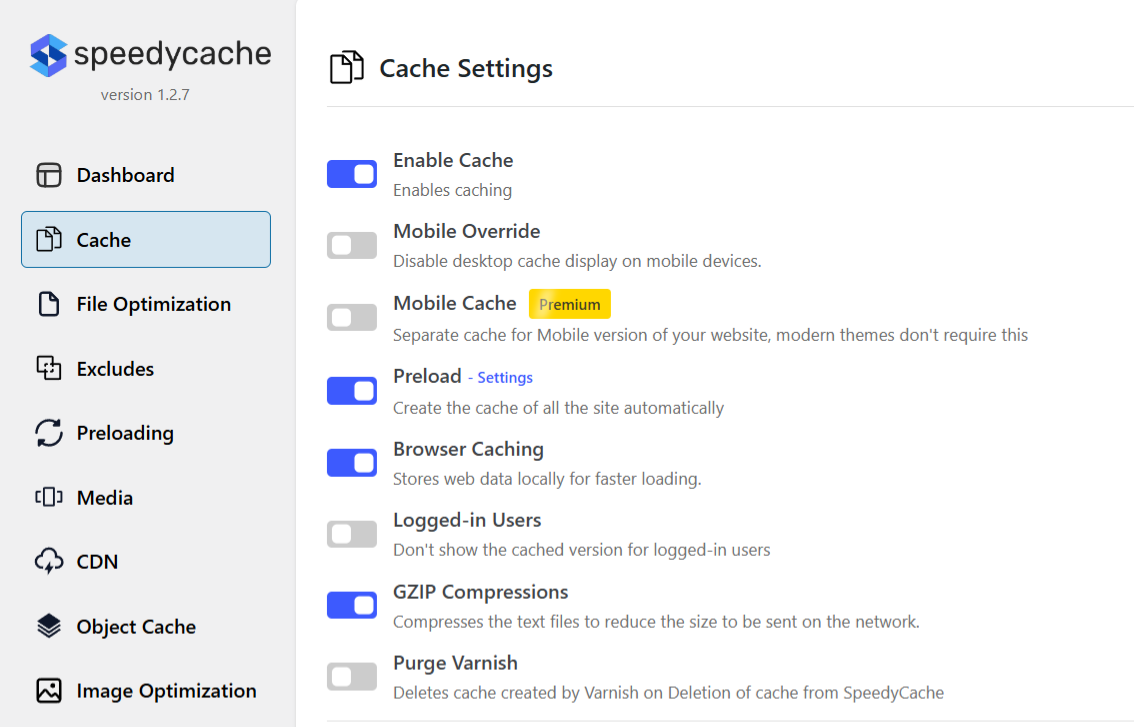
As I type this, it’s got over 500,000 active installations. The free version has limited functionality; to use more features, you will need to upgrade to the paid version.
Unfortunately, I didn’t get satisfactory results with SpeedyCache. I feel it is nothing more than a display trick and doesn’t perform as well as FlyingPress and LiteSpeed.
It appears decent at first glance, with features such as object caching and Varnish. In short, I’m not saying it’s ever been a subpar plugin, since there are many worse ones.
Compared with the first three cache plugins, I did not notice any unique features. Don’t depend on what I say; use it for yourself.
To Sum It Up
I know there are tons of WordPress cache plugins, both free and paid. I’ll add them if I find anything relevant. I consider FlyingPress my number one paid caching plugin, and LiteSpeed Cache my favorite free plugin. And WP Rocket is still a decent option.
I recommend Cloudflare APO with all those plugins, since it caches full pages in the Cloudflare Edge Network. Or you can use CDN-integrated hosting.
I didn’t include these WordPress cache plugins because:
| Plugin | Description |
|---|---|
| Swift Performance | It’s an aggressive cache plugin that performs well but can be difficult for beginners to navigate. That’s why I didn’t include it. It is free to use if you know how to access it. |
| Cache Enabler | It is an old plugin, and there is no reason to use it in today’s world. Yes, it’s simple, but there are better ones. |
| Hummingbird | A vivid UI plugin from WPMU DEV. It is attractive in terms of UI, but doesn’t perform as well as others and feels cluttered. Even some basic features are restricted to PRO subscribers. |
| Speed Optimizer | Cache plugin for SiteGround hosting; there’s nothing impressive about SG Hosting or SG Optimizer. |
| W3 Total | Definitely the most annoying cache plugin I’ve ever seen. There are many ways for average users to crash websites. |
| Fastest Cache | Old plugin that is no longer relevant – despite its simplicity, there are better alternatives available. |
| Super Cache | A cache plugin without any optimization. It’s from the WordPress core team, and it’s a waste of time. |
| 10Web Booster | Similar to NitroPack – expensive, but you get Cloudflare Enterprise, and don’t even bother with the free version. |

